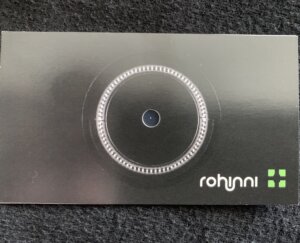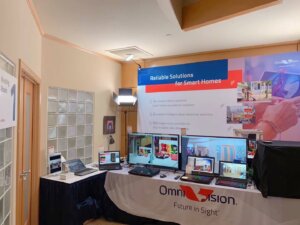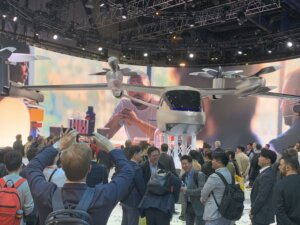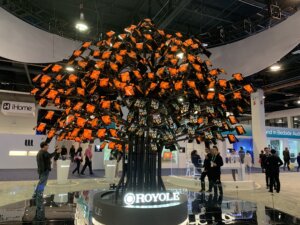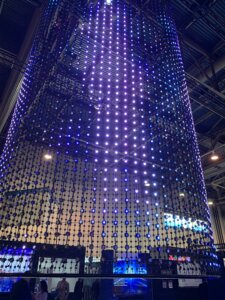This year, for the first time ever, I attended the Consumer Electronics Show in Las Vegas — better known as CES. All the stories you hear are true, from the $255 15-minute Lyft rides (though, to be fair, it could have been an autonomous vehicle) to all the wacky robots and flying Uber concepts. I do have to give a shout out to the Las Vegas Monorail system for the highly compelling $5 ride. It was clean and amazingly well organized, and best of all, saved me trying to justify that Lyft ride on my expense report!
But walking the floor – and having more clients clamoring to participate each year – begs the question of whether it’s become the “Electronics Show,” full stop. Most of CES didn’t feel very “consumer” focused. I was there to support our client Rohinni – a true innovator that is making mini and micro LED-based products a reality. But Rohinni doesn’t sell products that consumers can buy directly, instead its joint ventures, Lummi, Magna Rohinni and BOE Pixey, develop and manufacture some downright amazing components using mini LEDs that are in turn used in consumer products).
A look around the show floor suggests the same may be true for many of the current exhibitors. Sure, Amazon was onsite with every bell and whistle in its arsenal, which any consumer can buy. And maybe (although I have my doubts) I do need a refrigerator that grows herbs or a bathroom that predicts my every need (something that will soon be available to affluent consumers). But a majority of companies appeared to be promoting products that I can’t directly purchase as a consumer, suggesting that the very foundations of this event are transitioning.
While many tradeshows are struggling to find their purpose, CES, by all appearances, is thriving. The Las Vegas Convention Center and nearby facilities are maxed out. The show floor is packed, and attendees have to be verified to attend; so, they’re doing something right.
While the floor remains a huge attraction because exhibitors show us a glimpse of what our techno-future may hold, just as many people are here to meet and do business. CES has become a significant B2B networking opportunity. Even companies that are developing the most embedded technologies can meet with valuable contacts that they simply may not cross paths with elsewhere.
So, what does this mean for the average semiconductor equipment and materials company? Maybe I’m just biased, but in my book, the expense and manpower commitments still make CES a stretch for most. Even as the show moves away from the consumer, it hasn’t gone fully over to manufacturing. By all means, send your executives or sales teams to meet with those companies with which you might not be able to connect elsewhere.
I do think that everyone who works in tech should make the journey at least once to appreciate all of the things the human brain can imagine. Ultimately, the good news for everyone at CES is that unlike other times in Vegas, what happens in Vegas doesn’t stay there. For the right companies, CES is sure to unlock doors and deliver opportunities long after the halls are empty.
- Do you know what a mini LED is? See that speck of dust? Yeah, that’s what Rohinni works with every day!
- EMD Performance Materials brought science to the floor again this year with compelling presentations from its booth to educate on how materials drive electronics’ advances.
- OmniVision had fun AR/VR concept glasses that offered a glimpse into the future along with showcasing amazing image sensor achievements.
- It’s a beast – how will it land? Not sure the Hyundai’s concept flying Uber is quite what the average city needs.
- Had to give the LG’s latest gaming monitor a whirl (only crashed once!)
- Having been involved in flexible display’s early days at ASU’s flexible display center, Royole’s tree was truly amazing.
- For anyone who knows me, the fact that my favorite thing was the world’s largest service dog isn’t a surprise.
- NTT’s Innovative Optical and Wireless Network demo offered great visual and experiential impact
